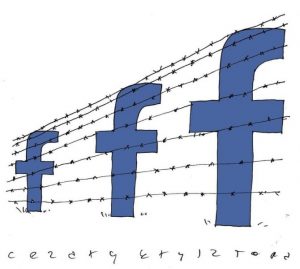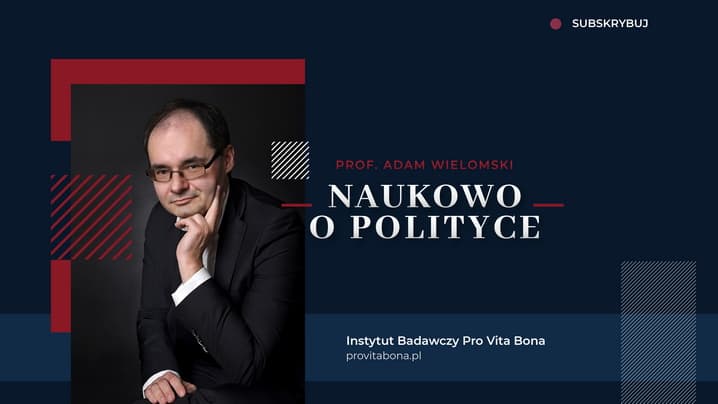This work of critical writing intends to look at the topic of media in contemporary society. This writing should be seen as the beginning of further attempts — building on the insights of figures as intellectually diverse as Marshall McLuhan and the lesser-known media theorist Harold A. Innis, Canadian philosopher George Parkin Grant, Noam Chomsky, and Camille Paglia — to extend towards a “unified field theory” of the relations between media and society.

It could be argued that the effect on society of the emergence of electronic mass media (and their immediate precursors such as cinema) has been profoundly underestimated by most thinkers, or interpreted in banal and fairly trivial terms. One point that can almost immediately be made is that there are considerable differences between the mass media before the emergence of the Internet as a mass medium, and afterwards. It could be suggested that the real birth of the Internet was in 1995, with the creation of the first websites which could be accessed by everyone who had a computer with an Internet connection. With ever-faster connections and ever-faster microcomputers (personal computers) the Internet spawned all kinds of new media developments that had never really been possible before, or had been prefigured only in some kind of fragmentary form. Thus, to look at the impact of the somewhat earlier media (mainly cinema, television, and the VCR) and then to try to examine the multifarious impacts of the post-1995 Internet, are largely separate questions.
As the Internet develops, we learn through different events and junctures about different aspects of its possible impact – such as the emergence of Amazon, of Napster, of political blogs, of MMORPGs, of Google, of MySpace, of YouTube, of Facebook, of SecondLife, of iTunes, of Twitter, of podcasts, of smartphones, and so forth. To briefly look at just one of these developments, Google has become the overwhelmingly dominant search-engine, and has been able to parlay that into vast commercial wealth. The only main alternative to Google one can probably think of today is A9, which is most prominently utilized now (as far as the author knows) by Amazon. There were also reports that some regional search engines in China and Korea were being hugely utilized.
In terms of human consciousness, it could be argued with a broad sweep, that the realm of modern media (mainly cinema, television, and Internet) constitutes a new type of reality, of various dimensions — parts of which can also be stored and recreated for viewing or listening by most people.
Until the emergence of the mass Internet after 1995, the situation was that, while almost anyone could use a camcorder, there was no easy way of widely distributing personal content. In the pre-Internet days, the “video” content that could be given a truly mass-audience constituted only an infinitesimal portion of all videotape filmed. Of course, just having “video” content today theoretically available to everyone on the Web who wishes to view it certainly does NOT guarantee it a mass-audience. What can be seen is that much of Web content, even today, is driven by the inertia, resources, and economic as well as cultural power of vast media enterprises, franchises and brands. This weight of inertia goes back three to four decades, at least.

In the pre-1995 days, almost everything in media that was widely available was produced by a relatively small number of different types of professionals, such as Hollywood movie directors and network television producers. And the final say on virtually all the sounds, speech, and images which could become available to a truly large, mass-audience was further channeled through an extremely small number of effective decision-makers, or “gatekeepers”. However, the weight of the pre-1995 media is such that the hegemony of various media enterprises, franchises and brands, endlessly and almost effortlessly continues. In fact, an argument could be made that such phenomena as celebrity gossip websites have in fact intensified many people’s never-ending excitation over various entertainment and sports celebrities.
While eclectic material can theoretically be made available on the Internet, in most cases, it lacks the “authority”, “cool-factor”, and advertising muscle of such phenomena as Hollywood blockbusters, CNN news programs, or videogames created with multi-million dollar budgets. Indeed, the effect of the Internet is often just to mobilize and intensify a given “fan-base” – rather than to encourage any kind of eclectic philosophical thinking, reflection, or discussion. The Internet has arrived on the scene after more than four decades of extremely intensive image shaping by media such as television and electrically-enhanced popular music (formerly mostly existing in the category of rock music, and now given over largely to rap and hip-hop.)
The notion that so-called “televangelism” may be a major aspect of the current-day media that brings into question the idea that there is overwhelming antinomianism in current-day media culture, is highly dubious. It could be argued that “televangelism” (which in any case may have in fact peaked in the 1980s) is mostly just another form of entertainment, at considerable remove from more traditional understandings of religion and the religious experience. It also frequently trades on highly dubious misapplications of prophetic and apocalyptic traditions. And any serious comparison of the comparative social and cultural reach and influence of Hollywood as opposed to “televangelism” show the former as far, far more salient.
In regard to talk-radio, it could be argued that there is little there but a mostly mindless, jingoistic, ersatz patriotism, whose main purpose appears to be to drive America into endless wars abroad.
As far as independent “art” films, documentaries, and so forth, nearly all of them can be seen as intensifying most of the trends and concepts prevalent today in most major Hollywood productions, rather than trying to give voice to a truly serious, constructive critique of current-day society.
It might also be noted that the mass-education system over the last three to four decades mostly failed to encourage any kind of “counter-ethic” to the prevalent media messages and images, thus resulting in the near-destruction of the possibility of nurturing a substantial number of more reflective, cultured, truly literate people in our society.
It could be argued that the real impact of media on human upbringing, conditioning, behaviour, and perception of reality is grossly underestimated. Who could realistically deny that the steady exposure of a generation to various media images, sounds, and speech, does not result in these being often seared into the mind, deeply internalized, and then, in some greater or sometimes lesser way, expressed in behaviour? As opposed to the immediate spoken word, the manuscript, the printed book, or even the mass newspaper, electronic media has raised the ability of a given person or idea to influence society to a hitherto unimaginable degree, and with the near-total exclusion of other persons, ideas, and ways-of-life. Not only does it allow public speech to reach simultaneously tens or hundreds of millions of people, it also raises the possibility of almost continuous, searing, graphic and auditory impact on viewers or listeners. It could be argued that media — unless the small number of its effective decision-makers described above is of strongly divergent viewpoints, or unless other institutions in society confront it very powerfully – may be the perfect instrumentality for total conformity or social totalitarianism, defined as imposing one way of thinking, being, existing, and living on a given population. Eighteenth-century legislation could be seen as inadequate to address this issue.

There is a growing body of literature around the world that increasingly demonstrates the startling degree of single-mindedness of those who are the effective decision-makers of the media, as well of its most prominent celebrities, which can be described as one of „Americanocentric consumerist liberalism”.
The motivations of the main decision-makers and prominent celebrities of the media can be looked at in light of the three main perceived functions of electronic mass media: advertising, entertainment, information (or news). There is an easy-to-see trend towards the ongoing unification of these functions, as well as of the blurring of fiction and non-fiction. The first two functions (advertising and entertainment) provide the source of three of the mainstays of media (ultimately derived from the ceaseless need to stimulate consumption in the hypermodern society, and to extend it to every part of the globe): illicit sex, violence, and „flash” (the ever-elusive „cool”; the glorification of speed, technology and technologically-derived special effects). Virtually all of what appeals to most people in television, films, and video today contains some aspect of these three elements, and there is a tendency to hyperintensify all three, across the media, for example, in movies which combine gruesome horror, gratuitous violence, and softcore sex. Because of the media’s profound, continuous, and unrelenting social impact, these three elements become unnaturally accentuated in society at large. Nevertheless, the media also maintains elements of maudlin sentimentalism in order to convince the more putatively decent-minded part of the audience that it is not entirely given over to antinomianism. The predominant texture of this facile sentimentalism, however, is far from a truly reflective, ethical outlook.
What the media calls „information” is centered on the following elements: „telescopic philanthropy”, an ongoing series of morality-plays, which vicariously elicit the sympathies of the viewer, often lacking connection with, or taken out of the context, of extant social relations and global realities; the constant excitation of different types of fears among the public, leaving the viewer in a tizzy of apprehension; and an unrelenting assault on politicians in general (with the exception of a few, often transient, sometimes permanent darlings), and on the public-political realm as a whole. It could be argued that much of the excitation of fear and insecurity among people is carried out for the sake of encouraging consumption as a vehicle for re-establishing one’s sense of personal security. The news also often itself provides large doses of sex, violence, and flash. There is, furthermore, the current of stinging cynicism and crassness in media which reflects the broader philosophical principle that media generally attenuates and rejects any sense of natural limits, boundaries, and social horizons. For all of its posturings, media lacks seriousness. This is also seen in its elevation of the trivial at the expense of the germane, for example, in the three network television specials of the Amy Fisher story in the early 1990s (this teenage girl shot and wounded the wife of an older man — Amy was having an affair with the man); or in the complaints about the cost of personal expenses of prominent politicians as solely defining the issue of waste in government — as opposed to vast, faceless, bureaucratic excesses.
What is the model of media representation, semantics, and semiotics? As is the case in any structure, there is an embedded system of references in media (visual, auditory, and spoken), some of these going back to the cinematic age. Their near-universal recognition does not indicate increasing media savvy among the general populace, but rather points to the existence of media as a distinct ontological realm. The day-to-day functioning of the news media is defined by the presentation and elaboration of various „personas”, whether enhanced or diminished; as well as by the expression of concepts in one-word or very short phrases, built up through constant media exposure (and often originated or quickly taken up and transformed in meaning by the media itself). The discourse of media tends in the direction of the ongoing evocation of powerful emotional stereotypes at dizzying speed, rather than of a more thoughtful discussion. Some of the types of single-minded media behaviour are „the feeding frenzy”, or „the wave-effect”. There are different roles played by news anchors (our Virgil-like guides to today’s series of calamities); reporters; talk-show hosts; sportstars; rock-stars; fashion-models; prominent businesspeople; financial analysts; political analysts; politicians, etc. The sports-industries, which focus the new, emerging city-identities of North America, and which constitute virtually all-pervasive aspects of life today, have largely been created by the possibilities of widespread media-exposure. As has been frequently noted, the shrine-like position of the television in most households, as well as the increasing amounts of time spent in front of it, point to its enormous significance in most people’s daily lives. That considerable numbers of persons are playing videogames rather than watching television, or surfing the Internet rather than watching television, is not too likely to constitute much of an improvement.

The emergence of the Internet does not necessarily appear to be a boon for true freedom and critical thinking. What is often happening is that the Internet is becoming just another television for most people. How many persons are using the Internet mostly for serious purposes, as opposed to various graphical amusements? Ironically, the development of bigger broadband on the Internet, where ever clearer video-streaming becomes possible, is likely to dumb down the content — away from text, where more intelligent ideas can sometimes be more readily expressed.
It could be argued that today, American pop-culture and the world media-culture can be seen as becoming virtually coterminous. Media is thus, it could be argued, the instrument for American cultural imperialism, for the homogenization, rationalization, and technologization of the world. It is the visibly concrete way in which non-American cultures are attenuated, and opened up to consumption. Probably no country can long resist the excitement proffered by American sex, violence, and flash, which raises the ire of nationalists and traditionalists, who can see no way of confronting the seepage, and sometimes turn to violence and xenophobia. There is something uniquely alluring in this American combination of sex, violence, and flash, as even French cinema and television (which certainly has no lack of explicit sexuality) is becoming rapidly Americanized. It is interesting to note that, in the early 1990s, French protests over including culture in the GATT were one of the agreement’s biggest controversies. It is possible to make here, as well, some pointed comments, in the style of Canadian philosopher George Grant, on Canada’s own „cultural industries”, and on what is said to constitute Canadian nationalism today – i.e., that the Canadian „cultural industries” today are virtually indistinguishable in their content from one North American (U.S. and Canada) mode of life.
The modern mass media, as an instrumentality which creates instantaneity; which abolishes social and national boundaries and horizons; which bombards one’s mind with an unending stream of disquieting images, sounds, and speech; which destroys the quiet discourse of the book, ushering in the postliterate age and „the new illiteracy”; and which tends towards the construction of an autonomous electronic realm, thus attenuates much of what has traditionally been considered the sense of being human. It could be argued that it undermines rooted communities, as well as literary-humanistic culture, and ultimately chokes off the human faculties of real sympathy (for one’s immediate neighbor) and real imagination, replacing these with a never-ending, and ultimately pointless, „jangling” of human society, psychology, and core-identity, leading more concretely to increased crime, violence, anomie, as well as the disenchantment of both the public-political realm, and of one’s perception of one’s stable place in the world. The information traffic or information overload most people are caught in today tends to create a “postmodern blur” of social existence and reality.
To a large extent, even more traditional media follow in the directions set by the electronic media — for example, the mass-marketing of little but books like those by Stephen King (the jolt of horror), and Danielle Steele (the frisson of sex); the selling of movie-rights before the novel is even written; and the tendency of what was once called belles lettres or fine literature to cater to increasingly low tastes. Books are often today simply another form of increasingly vulgar entertainment to be crassly marketed.
The hoped-for arising of a concerted, critical theory of media, is seen as being of utmost importance to maintaining a true sense of humanity today and in the future.
In the processes of our being enveloped ever more deeply in the mass media field, it could be argued that we are becoming increasingly less of what was traditionally considered as being truly human. The emergence of electronic mass-media may ultimately be the endgame for our sense of true humanity.
Mark Wegierski



